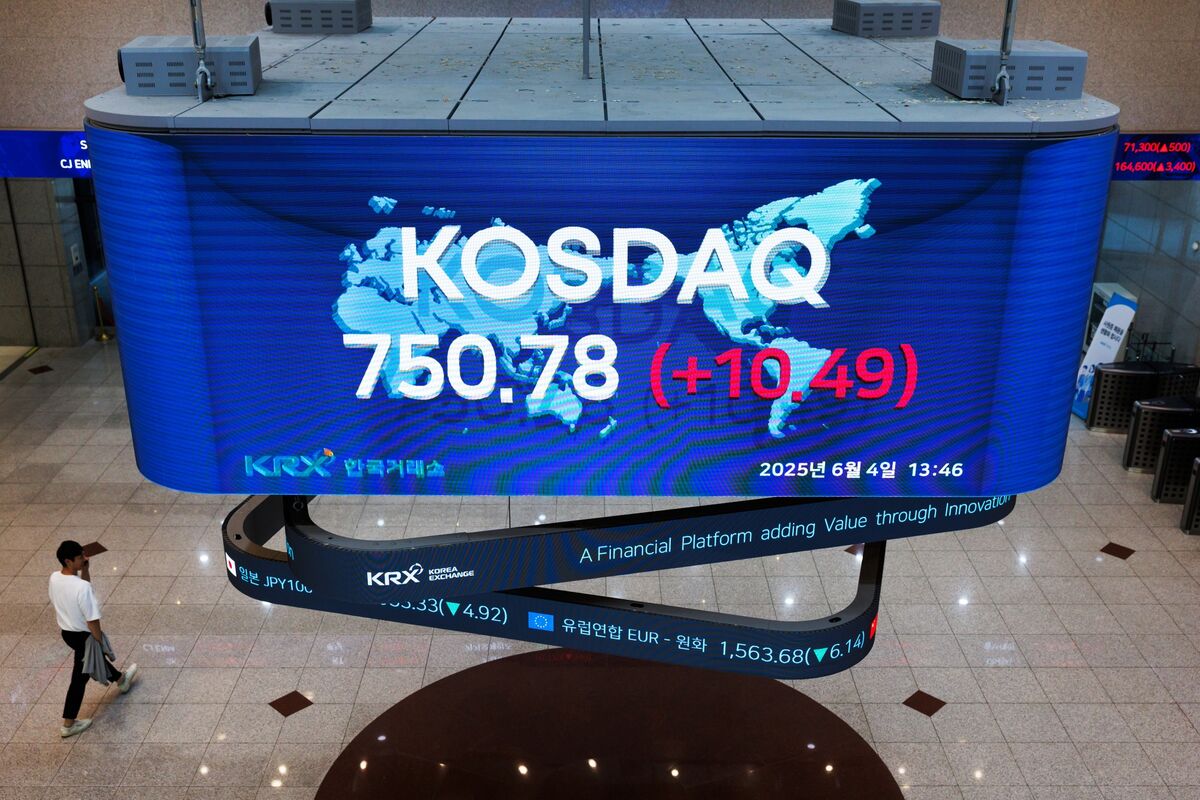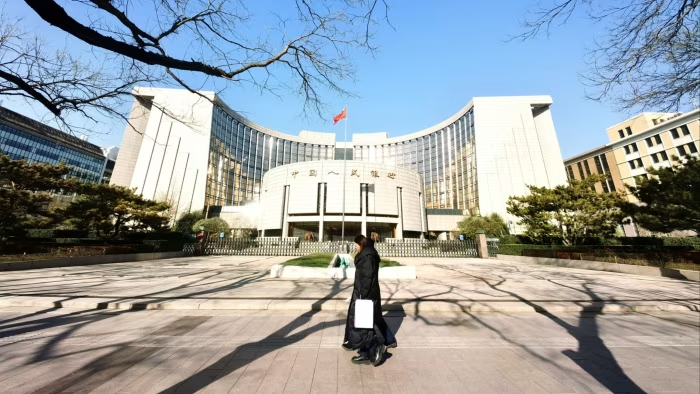Grizzlies guard Scotty Pippen Jr. has played 100 games for Memphis, but will miss the start of the season.
MEMPHIS, Tenn. (AP) — Memphis Grizzlies guard Scotty Pippen Jr. will have a procedure to fix an issue in his left big toe that will keep…

Grizzlies guard Scotty Pippen Jr. has played 100 games for Memphis, but will miss the start of the season.
MEMPHIS, Tenn. (AP) — Memphis Grizzlies guard Scotty Pippen Jr. will have a procedure to fix an issue in his left big toe that will keep…

Mass Effect And Halo are two sci-fi series that need not introduction, though over the past few years they’ve fallen off a bit…
Mass Effect has a new game on the way and it’s going to…

Investors in South Korea looking to hedge their big US stock holdings or play their next wager are embracing a new type of trades: leveraged VIX bets.
With about $130 million in inflows this year, the 2x Long VIX Futures exchange-traded fund — which seeks twice the returns of a gauge tracking Cboe Volatility Index futures — has become one of the favorite US-listed ETFs and was the seventh most bought in July, according to data from the Korea Securities Depository. The additions represent about one-fifth of the ETF’s global inflows.

Unlock the Editor’s Digest for free
Roula Khalaf, Editor of the FT, selects her favourite stories in this weekly newsletter.
Chinese tech giants have paused plans to issue stablecoins in Hong Kong, after Beijing raised concerns about the rise of currencies controlled by the private sector.
Companies including Alibaba-backed Ant Group and ecommerce group JD.com had said over the summer they would participate in Hong Kong’s pilot stablecoin programme or issue virtual asset-backed products, such as tokenised bonds.
But they have since put their stablecoin ambitions on hold after receiving instructions from Chinese regulators, including the People’s Bank of China (PBoC) and Cyberspace Administration of China (CAC), not to move ahead, according to multiple people familiar with the situation.
PBoC officials advised against participating in the initial stablecoin rollout over concerns about allowing tech groups and brokerages to issue any type of currency, five people said.
One person with knowledge of the central bank’s briefings to the tech groups said the issuance of privately run stablecoins was also seen as a challenge to the PBoC’s digital currency project, the e-CNY.
“The real regulatory concern is, who has the ultimate right of coinage — the central bank or any private companies on the market?” said a different person.
Stablecoins are digital tokens pegged to fiat currencies such as the US dollar and are a cornerstone of crypto trading.
The pushback from Chinese authorities underscores how regulators around the world are keen to respond to the rise of stablecoins, particularly after the Trump administration championed them as a pillar of mainstream finance and a vehicle to project the US dollar’s dominance.
The European Central Bank has said widespread adoption of dollar stablecoins could hinder its ability to control monetary policy.
The Hong Kong Monetary Authority, the territory’s de facto central bank, in August started accepting applications for stablecoin issuers, establishing itself as a testing ground for the mainland.
In China, interest in the Hong Kong programme swelled over the summer, with some officials suggesting that renminbi-denominated stablecoins would potentially boost the yuan’s international use.
Zhu Guangyao, former vice-minister of finance in China, argued in June that “the strategic purpose behind the US promotion of stablecoins is to preserve dollar supremacy” and it is crucial for China to respond to that financial challenge with the development of a stablecoin pegged to renminbi.
“We should fully leverage the pilot programmes in Hong Kong,” Zhu said at a forum in Beijing in June. “The renminbi stablecoin must be integrated into the overall design of the national financial strategy.”
But two people with knowledge of the tech groups’ plans said financial regulators were taking a more cautious approach following a speech by former PBoC governor Zhou Xiaochuan in late August.
At a closed door financial forum in Beijing in July, Zhou urged a thorough evaluation of stablecoins and potential systemic risks they posed.
“We need to be vigilant against the risk of stablecoins being excessively used for asset speculation, as misdirection could trigger fraud and instability in the financial system,” Zhou said at the China Finance 40 Forum, according to an article later published by the state-backed think-tank.
Zhou urged a “careful assessment of the true demand of tokenisation as a technological foundation”.
He added: “Although many believe stablecoins will reshape the payments system, in reality, there is little room to cut costs in the current system, particularly in retail payments.”
PBoC declined to comment. HKMA said it does not comment on market rumours. CAC, Ant and JD.com did not respond to requests for comment.

Max Verstappen has explained how he missed out on a final effort in Qualifying at the United States Grand Prix, after his first effort proved enough to secure pole.
The four-time World Champion will line up at the head of the field for Sunday’s…

Oscar Piastri has admitted that he “didn’t really feel terribly comfortable” during Qualifying for the United States Grand Prix, with the Australian aiming to “make up some ground” on Sunday after ending the session in P6.
The weekend…

The main aim of stock picking is to find the market-beating stocks. But the main game is to find enough winners to more than offset the losers So we wouldn’t blame long term Amotiv Limited (ASX:AOV) shareholders for doubting their decision to hold, with the stock down 33% over a half decade.
Now let’s have a look at the company’s fundamentals, and see if the long term shareholder return has matched the performance of the underlying business.
Trump has pledged to “unleash” American oil and gas and these 15 US stocks have developments that are poised to benefit.
While the efficient markets hypothesis continues to be taught by some, it has been proven that markets are over-reactive dynamic systems, and investors are not always rational. One way to examine how market sentiment has changed over time is to look at the interaction between a company’s share price and its earnings per share (EPS).
In the last half decade Amotiv saw its share price fall as its EPS declined below zero. This was, in part, due to extraordinary items impacting earnings. At present it’s hard to make valid comparisons between EPS and the share price. However, we can say we’d expect to see a falling share price in this scenario.
You can see below how EPS has changed over time (discover the exact values by clicking on the image).
It’s good to see that there was some significant insider buying in the last three months. That’s a positive. On the other hand, we think the revenue and earnings trends are much more meaningful measures of the business. Dive deeper into the earnings by checking this interactive graph of Amotiv’s earnings, revenue and cash flow.
It is important to consider the total shareholder return, as well as the share price return, for any given stock. The TSR is a return calculation that accounts for the value of cash dividends (assuming that any dividend received was reinvested) and the calculated value of any discounted capital raisings and spin-offs. So for companies that pay a generous dividend, the TSR is often a lot higher than the share price return. As it happens, Amotiv’s TSR for the last 5 years was -16%, which exceeds the share price return mentioned earlier. The dividends paid by the company have thusly boosted the total shareholder return.
While the broader market gained around 12% in the last year, Amotiv shareholders lost 8.3% (even including dividends). However, keep in mind that even the best stocks will sometimes underperform the market over a twelve month period. Unfortunately, last year’s performance may indicate unresolved challenges, given that it was worse than the annualised loss of 3% over the last half decade. Generally speaking long term share price weakness can be a bad sign, though contrarian investors might want to research the stock in hope of a turnaround. While it is well worth considering the different impacts that market conditions can have on the share price, there are other factors that are even more important. Take risks, for example – Amotiv has 2 warning signs we think you should be aware of.

 Build a Rocket Boy
Build a Rocket BoyIn July this year workers at Build a Rocket Boy, a video game studio in Edinburgh, were called to an all-staff meeting.
Their first ever game, a sci-fi adventure called MindsEye, had been released three weeks earlier – and it had…

 Bloomsbury Publishing
Bloomsbury PublishingFor South Koreans, tteokbokki is more than a snack. It’s soul food.
This sweet and spicy dish made with chewy rice cakes is a staple of Korea’s street food culture and beloved by people of all ages.
It’s the food students turn…

Lando Norris has been reflecting on what caused McLaren to “struggle” more in Qualifying for the United States Grand Prix, with the Briton – who took P2 – suggesting that he had “no chance” of taking pole position.
After initially…